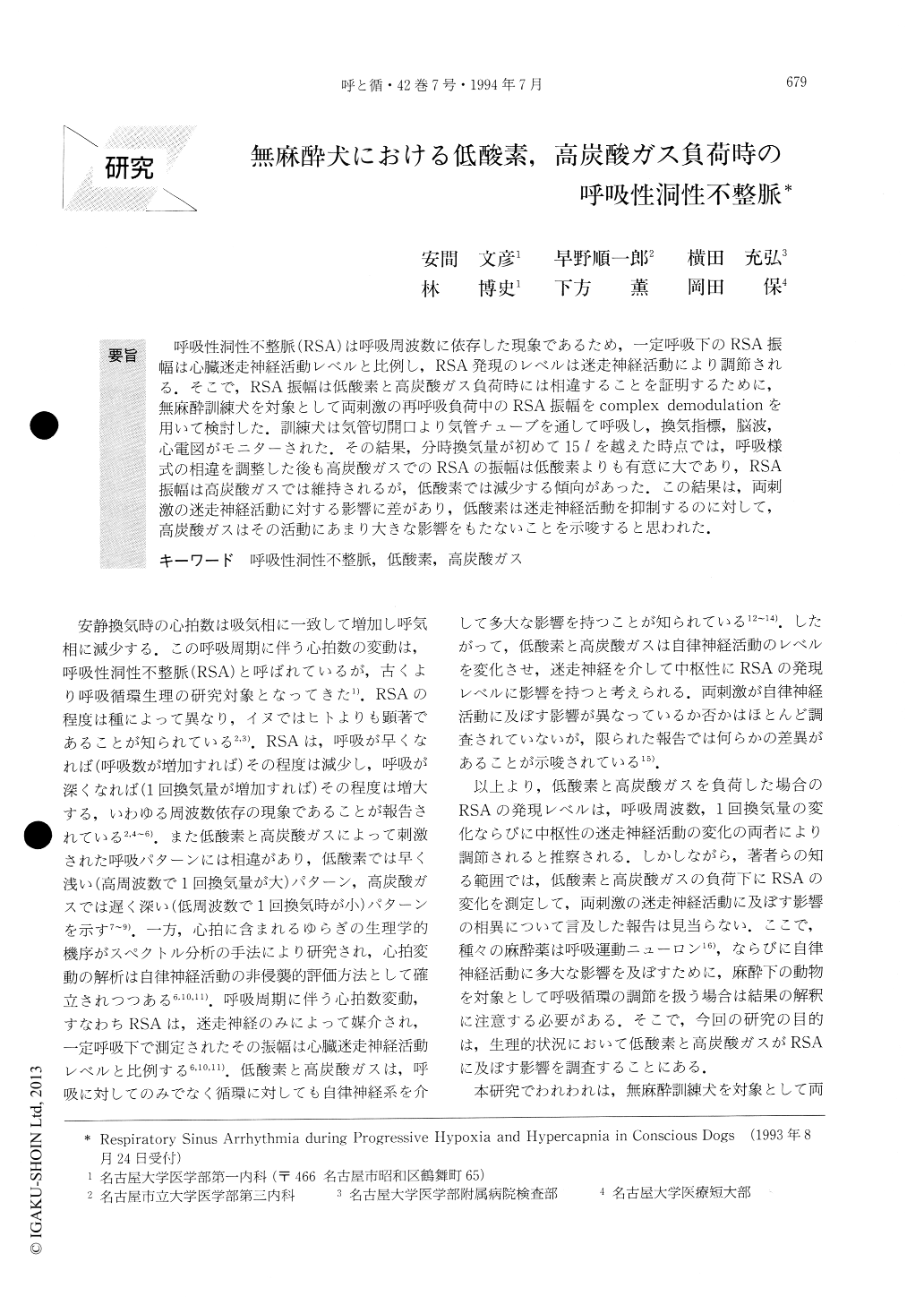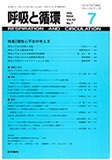Japanese
English
- 有料閲覧
- Abstract 文献概要
- 1ページ目 Look Inside
呼吸性洞性不整脈(RSA)は呼吸周波数に依存した現象であるため,一定呼吸下のRSA振幅は心臓迷走神経活動レベルと比例し,RSA発現のレベルは迷走神経活動により調節される.そこで,RSA振幅は低酸素と高炭酸ガス負荷時には相違することを証明するために,無麻酔訓練犬を対象として両刺激の再呼吸負荷中のRSA振幅をcomplex demodulationを用いて検討した.訓練犬は気管切開口より気管チューブを通して呼吸し,換気指標,脳波,心電図がモニターされた.その結果,分時換気量が初めて15lを越えた時点では,呼吸様式の相違を調整した後も高炭酸ガスでのRSAの振幅は低酸素よりも有意に大であり,RSA振幅は高炭酸ガスでは維持されるが,低酸素では減少する傾向があった.この結果は,両刺激の迷走神経活動に対する影響に差があり,低酸素は迷走神経活動を抑制するのに対して,高炭酸ガスはその活動にあまり大きな影響をもたないことを示唆すると思われた.
The fluctuation of heart rate associated with respira-tion (RSA) is a frenquency dependent phenomenon. The RSA amplitude is proportional to the activity of the cardiac vagal nerves, when it is measured with constant ventilation. The goal of our present study is to show the effects of hypoxia and hypercapnia on RSA in a physiological condition. In this context, we examined ECG responses to progressive isocapnic hypoxia and hyperoxic hypercapnia and compared the RSA ampli-tude in two unanesthetized dogs.

Copyright © 1994, Igaku-Shoin Ltd. All rights reserved.


